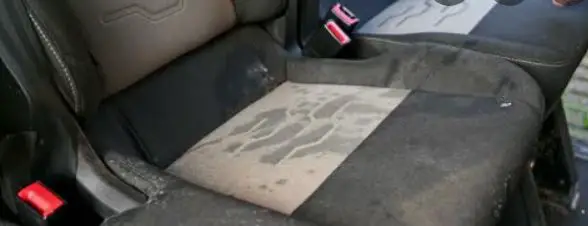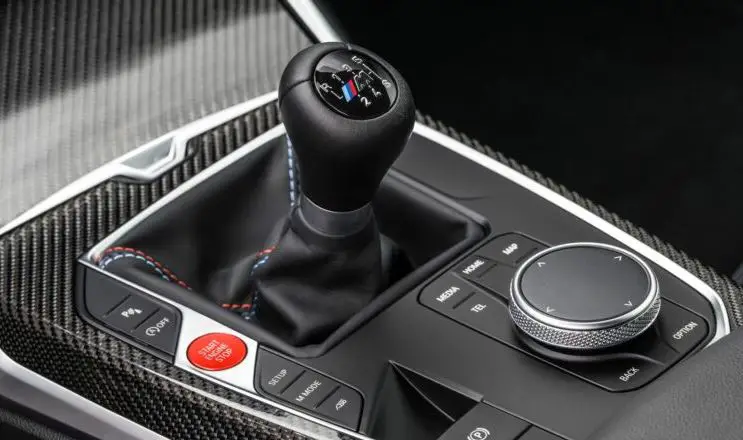Mold. It’s a word that strikes fear into the hearts of many people. And for good reason! Mold can cause a variety of problems, from respiratory issues to structural damage. But what happens when mold starts growing on your car seats? Is it dangerous for your health? Can it damage your car’s interior? In this blog post, we will answer all of your questions about mold and car seats! We’ll also provide you with a guide on how to remove the mold safely and effectively , and give some tips to ensure that it wont return!
Lets take a look!
What Is Mold?
Mold is a type of fungi that can grow both indoors and outdoors. Mold spores are found everywhere in the air, but they only start to grow when they find the right conditions. In order to grow, mold needs four things: moisture, food, oxygen, and darkness. When mold spores land on a wet or damp surface, they will start to grow and multiply.
How Can You Identify Mold?
Mold can be many different colors, including black, white, green, or brown. It can also appear as a stain or a fuzzy growth. Mold often has a musty or earthy smell.
If you see mold or suspect that there might be mold growing somewhere in your car, it’s important to take action right away.
How Can Mold Grow In A Car?
Mold can occur in your car if the conditions are right. If your car is parked in a humid or damp area, or if there is a leak that is allowing water to seep into the car, mold can start to grow. Mold growth can also be caused by spills, condensation, or wet clothing left in the car.
One area of a car which is prone to mould are the seats.
Seats are often made of cloth which can hold moisture, and they are also in close proximity to the floor of the car where water can accumulate. If you have ever had a spill in your car, or if it has been parked in a damp area, there is a chance that mold has started to grow on your seats.
What Are The Risks Of Mold In A Car?
Mold can be dangerous for your health if you are exposed to it. Inhaling mold spores can cause a variety of respiratory problems, including coughing, sneezing, and difficulty breathing. Mold can also trigger allergies and asthma attacks. If you have a mold allergy, you should avoid exposure to mold as much as possible.
Mold can also damage your car’s interior. Mold can cause stains and discoloration, and it can also lead to the deterioration of surfaces like leather or cloth. If left untreated, mold can cause serious damage to your car’s interior.
In addition to the risks to your health and your car, mold can also cause bad smells. Mold often has a musty or earthy smell that can be unpleasant for you and your passengers.
Can You Drive A Car That Has Moldy Seats?
If your car has moldy seats, you may be wondering if it’s safe to drive. The answer depends on the extent of the mold growth and the condition of the seats. If the mold is only on the surface of the seats and they are otherwise in good condition, then it should be safe to drive.
What Tools Do I Need To Remove Mold From Car Seats?
To tackle a mold problem on car seats , you will need the following supplies before you start the cleaning process
–White distilled vinegar: To kill mold and mildew, white distilled vinegar is a natural disinfectant that is safe to use on car seats.
–Vacuum: To remove mold spores and other allergens from the car seat, vacuuming is a must.
–Spray Bottle: To apply the vinegar solution directly to the moldy areas, a spray bottle is needed.
–Towels or rags: For wiping up the vinegar solution and mold spores, towels or rags are necessary.
–Scrub brush: To scrub moldy areas and loosen mold spores, a scrub brush will come in handy.
–Gloves: To protect your hands from the vinegar solution and mold spores, gloves are a must.
–Eye protection: To keep mold spores from getting in your eyes, eye protection is essential.
–Mask: To avoid breathing in mold spores, a mask is necessary.
How To Remove Mold From Car Seats
Once you have gathered all the supplies listed above , you can begin to take action to remove the mold from the seats. Luckily there are just a few simple steps to this process.
1. Vacuum the affected areas thoroughly. Mold spores can be very tiny, so it’s important to make sure you vacuum up as many of them as possible. If you have an allergy to mold, it’s also a good idea to wear a mask while you’re doing this.
2. Make a solution of equal parts white distilled vinegar and water. Vinegar is a natural disinfectant and it’s effective at killing mold.
3. Apply the vinegar solution to the affected areas with a spray bottle. Make sure you get into all the cracks and crevices where mold likes to hide.
4. Let the vinegar solution sit for at least 15 minutes. This will give it time to kill the mold spores.
5. Scrub the affected areas with a scrub brush to loosen any mold spores that are still clinging to the surface.
6. Wipe up the vinegar solution and mold spores with towels or rags. Throw these away when you’re finished so they don’t spread the mold to other parts of your car.
7. Vacuum again to make sure you’ve gotten rid of all the mold spores.
8. If the moldy smell is still present, try sprinkling some baking soda on the affected areas and letting it sit overnight. Vacuum it up in the morning and the smell should be gone.
Will The Method Outlined Above Work For Leather Seats?
Yes, the method outlined above will work for leather seats. However, you may need to use a slightly different solution. For leather seats, mix one part white distilled vinegar with two parts water. This weaker solution will help protect your leather seats from damage while still being effective at killing mold spores. Apply the solution to the affected areas with a spray bottle and let it sit for 15 minutes before wiping it up with a clean cloth. Vacuum the area thoroughly when you’re finished.
How To Prevent Mold Growing On Your Car Seats In Future
Once you’ve gotten rid of the mold in your car, it’s important to take steps to prevent it from coming back. Here are a few tips:
– Keep your car clean and free of clutter. Mold likes to grow in dark, moist places, so a clean car is less likely to have mold problems.
– If you spill something in your car, clean it up immediately. spilled food or drinks can attract mold spores and lead to new growth.
– Park in a garage or covered parking area whenever possible. This will protect your car from the elements and reduce the amount of moisture that can lead to mold growth.
– Use an air conditioner or dehumidifier in your car if you live in a humid climate. This will help to keep the air dry and prevent mold from growing.
– If you notice any mold growth, take care of it immediately. The sooner you deal with it, the less chance there is of it causing serious damage to your car or making you sick.
If you follow these tips, you can minimize the risk of mold growing in your car and keep your upholstery looking pristine for years to come. However, if mold does become a problem, don’t hesitate to use the steps above to get rid of it quickly and safely.Mold can be a serious problem in any car, and it’s important to take care of it as soon as possible.
Go Home











